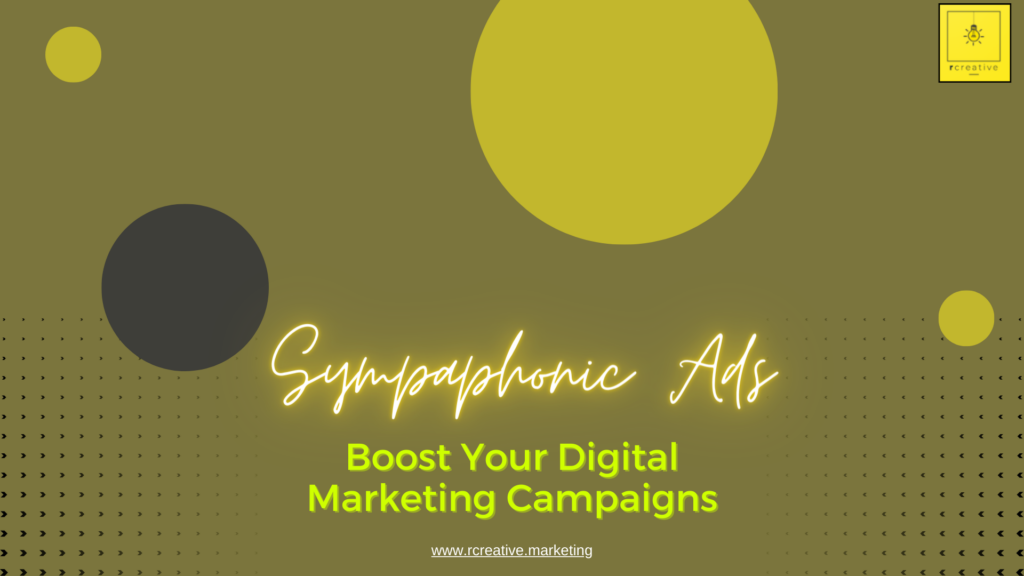I Spent One Year Running My Digital Marketing Business on Linux – Could Linux Be For You Too?
One year ago I replaced my aging MacBook with a Linux powered laptop - for running my business. Macs are known as the machine for marketing businesses. I took the plunge anyway.
Top 5 Construction Company Digital Marketing Tips
As you work on your strategy for marketing a construction business, consider some of these tips to make your online content stand out!
Should You Hire a Copywriter?
When I tell people I’m a copywriter, I usually get the same reaction: “Oh!” Followed by, “Cool. That’s pretty cool.” In general, most of the people I meet don’t quite understand what copywriters do, or how they get paid for it. Even my own mom wasn’t clear on what I actually do for a living and I’ve got a handful of family members who think that I “just do something online”. Or I get the fun mix up where people think that I do copyrighting – as in something related to copyright law. I do not, repeat, do not, know a thing about copyrights and patents! If you’re curious about copywriting, but haven’t ever had the chance to ask, pull up a chair and grab some coffee! And if you’re on the fence about hiring a copywriter, don’t worry. We’ll look into the pros and cons of hiring a copywriter, as well address times when you might be better off doing the work in house. First Things First: What do Copywriters Do? Copywriting is a profession as old as the idea of product marketing. If you’ve ever read an ad, you’ve read something written by a copywriter. If you’ve ever watched a television show, you’ve listened to lines written by copywriters (from a specialty you probably know as screenwriting). If you’ve ever read a product description in a catalog or on a website, you read the work of a copywriter. Copywriting is all around us. In the era of online business, we’re exposed to copywriting everywhere from websites to email newsletters and social media posts. Copywriters are the nameless lot responsible for much of the content you see and interact with…
9 Easy Tips for Helping Your Nonprofit to Think in Marketing Terms
One of the most difficult parts of running a nonprofit is the administrative work and fundraising that happens behind the scenes. When you’re focused on meeting your nonprofit’s goals, the last thing you need is to miss those goals because you’re behind the curve when it comes to marketing your mission and the work that you do. The key to making connections and drawing support is to work smarter, not harder, to reach potential supporters. Sharing your nonprofit’s work and thinking in marketing terms – like you might if you were running a for-profit business – can help you meet or exceed your fundraising and support goals. With those out of the way, you can spend more time and resources on the projects that matter most to you and your supporters. Here are some ways to market your nonprofit in a way that won’t leave your supporters with a sour “used car salesman” taste in their mouths: 1. Define Your Target Audience Let’s face it: not every person you meet is going to relate with what your nonprofit does and want to support you. That’s okay. Actually, that’s a great thing. There’s no company or nonprofit that appeals to every human being universally. And that’s what allows your work to really stand out. Instead of using blanket approaches to raise funds or find support, look to audiences – groups of people – who are most likely to support the work that you do. For example, if you run a nonprofit that’s dedicated to saving local ecosystems, look for individuals who are committed to the local landscape and already support other groups, like bird watching clubs, or events, like cleanup days,…
Using a Website Template or WYSIWYG Website Builder? Don’t Forget to Tie Up These Loose Ends
Few websites are built without some kind of templating. Even web developers use low level templating to organize their code and streamline their development process. If you’re building your own website you’re probably using a visual template for your website (often called a theme). You may even be using a what-you-see-is-what-you-get (WYSIWYG) drag and drop web builder (like what is offered by WordPress’ Gutenberg, Wix, or Weebly). But there is an inherent danger when using website templates - forgetting to make them uniquely yours. You don’t want someone visiting your website only to find some content they have seen on a similar looking site elsewhere. If you find this article helpful consider giving it a share ? Once you’ve completed your first draft with your website template don’t forget to tie up these loose ends: Boilerplate Most web templates include some static text meant to get you started, explain the purpose of the template page, or give you instructions on how to use that page template. Don’t forget to replace or edit this text. Your best bet, read it and then delete it and write the content for your own page. You don’t want boilerplate on your site. Even if the homepage template’s text sounds like it's gold you don’t want to run the risk of sounding like someone else, publishing duplicate content, or being noticed for being identical to another site. Write your own content or hire a copywriter to write uniquely great content for your site. Default stock photos You want your website to look great. Hey, we get it. You don’t have the time or equipment to take photos as great as the stock photos included in…
Boost Your Non-Profit’s Bottom Line With Recurring Online Donations
There’s a common misconception that non-profits don’t make any money. But if you operate, work for or volunteer with a non-profit, you know that this couldn’t be any farther from the truth. Non-profits need money to operate and serve their communities. Sometimes, non-profits need a lot of money to accomplish their goals or carry out their mission. Often, non-profits rely on donations to meet their financial goals. But raising funds can be its own headache. Recurring online giving is an ideal solution to round out your non-profit’s funding puzzle. Of course, it can’t wholly replace fundraising or the excitement of an annual pledge drive, but recurring giving can help to even out your non-profit’s budget from month-to-month, and even increase donations from year to year. [text_with_frame id="368c1dbfefba91dceb946d322e0e86bc" content="‹¨›p‹˜›‹¨›em‹˜›If you find this article helpful consider giving it a share‹¯›nbsp;‹¨›/em‹˜›?‹¨›/p‹˜›" line_color="rgba(0,0,0,.07)" text_font="body" heading_font="heading" animation="none" animation_speed="2" animation_delay="0" __fw_editor_shortcodes_id="e6852c2dacc162bc8c34ba646905e841" _fw_coder="aggressive"][/text_with_frame] Streamline Donations Recurring online donations allow your donors to pledge a certain amount for monthly/quarterly/yearly giving in a way that’s similar to the pledge cards that you already use at conferences and event tables. However, unlike with physical pledge cards, donors can fill out recurring online donation forms from the comfort of their own homes – or on their smartphones while they’re on the go. Recurring online donation portals safely capture donor information and consistently withdraw the requested amount at preset intervals from the donor’s bank account, PayPal account or credit card. Best of all, the information collected through a recurring online donation platform keeps information safely stored in one place – versus piles of pledge cards with information that must be manually entered. Additionally, the monies collected online all end up in a…
How to Prepare Your Material for Your Web or Graphic Designer – and Get a Better First Draft
Get Your Nikes On! A Few Tips Before Running to Your Designer I recently received a call from a customer needing a fresh design for a brochure. This is what she had when she called: Ideas, but unsure of which direction to take Copies of a variety of logos, colors, and fonts from decades of changes And she wanted something bright and “up to date” Okay. Let’s get started. But first we need some direction. Here's how I help my clients determine what design they need. That way, once I begin designing, we're already on the right track. This list will be helpful for anyone needing: Web design or site updates Print on paper communication pieces Promotional material for advertising [text_with_frame id="368c1dbfefba91dceb946d322e0e86bc" content="‹¨›p‹˜›‹¨›em‹˜›If you find this article helpful consider giving it a share‹¯›nbsp;‹¨›/em‹˜›?‹¨›/p‹˜›" line_color="rgba(0,0,0,.07)" text_font="body" heading_font="heading" animation="none" animation_speed="2" animation_delay="0" __fw_editor_shortcodes_id="e6852c2dacc162bc8c34ba646905e841" _fw_coder="aggressive"][/text_with_frame] Preparing Your Material For Your Designer: Goal Audience Method Photos and Logos Brand or Company Image Colors Fonts Goal Before spending money on your website, advertisement, brochure, or company t-shirt, think about your goal. Where do you want this content to take your customer? Are you encouraging customers to use the e-commerce part of your business to free up your labor force? Do you want potential customers to go to a trade show? Maybe you have a new product you are eager to sell. Your goal gives your designer clear direction. Audience We’ve all had that school assignment to write a story using the basic elements of character, plot, setting, conflict, and resolution. Consider this when gathering your ideas for the project you are creating. Focus on who the people (characters) are that you want to reach and what…
How to Stay Focused on Your Creative Tasks – And OFF of Social Media
Creative work is challenging - both in the act of actually creating and in the act of finding time to do so. More than half the battle in creating new content (of any sort) is finding the time and head space to simply sit down and do it. Outside distractions suck so much time, especially if that time is a few hours one afternoon to work on a your company's blog posts. These distractions, like customers in your shop, children trying to break into your home office, or a contractor working on your building, can all get in the way of sitting down at the computer to work. But once you’re at the computer, you might even find the distractions beyond your open Word doc or WordPress admin panel are much more attractive and urgent than the work at hand. Emails, social media, news sites, and even needed technical updates can all suck the productivity right out of your block of work time. So how do you overcome overwhelm when you sit down at the computer? And, maybe more importantly, how do you curtail the “Twitter break” that turns into an hour-long trek down a rabbit hole of political debates or a sidestep into your Facebook feed and catching up with old friends? Here are some helpful ways that you can cut the virtual clutter and get right to work when you sit down to create: Schedule Time for Everything You schedule your meetings, lunch break, and everything else that you do in your work day, but what about when you sit down at the computer? Cracking open your laptop screen might signal the beginning of a block of work…





